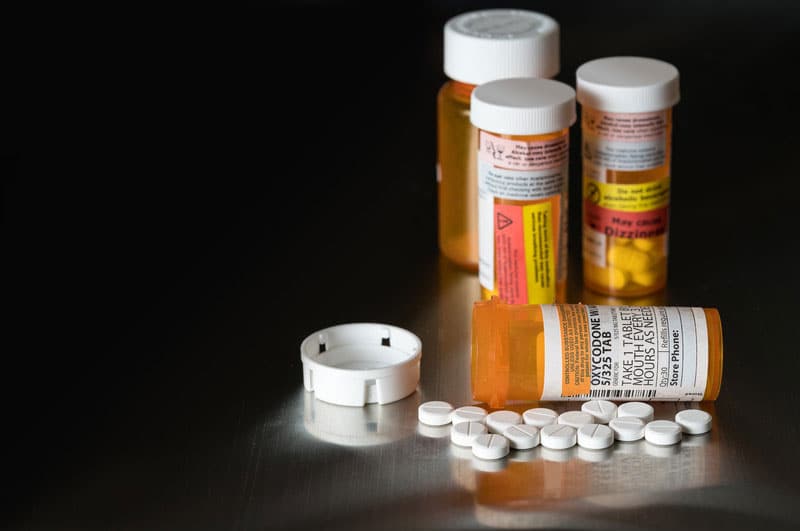According to provisional data from the Centers for Disease Control and Prevention (CDC), opioids were responsible for nearly 50,000 of the 72,775 overdose deaths that occurred during the 12-month period ending October 2017. Coders need to understand how to correctly code for opioid use, abuse and dependence. Medical billing for substance use disorder services is very complex and the support of an experienced medical billing company can be very significant when it comes to submitting accurate claims for optimal reimbursement.
Diagnosis of Opioid Use Disorder
The fifth edition of the Diagnostic and Statistical Manual of Mental Disorders-DSM5-introduced Opioid Use Disorder diagnosis. Opioid use disorder combines opioid use, opioid abuse, and opioid dependence. The diagnosis of Opioid Use Disorder can be applied to a person with “a problematic pattern of opioid use leading to clinically significant impairment or distress” and experiences at least two of the following symptoms within a 12 month period:
- Takes more opioid drugs for a longer time than intended.
- Wants or tries to control opioid drug use without success.
- Spends a lot of time obtaining, taking, or recovering from the effects of opioid drugs.
- Has opioid cravings
- Fails to carry out important roles at home, work or school due to opioid use.
- Continues to use opioids, despite use of the drug causing persistent or recurring relationship or social problems.
- Gives up important social occupational or recreational activities because of opioid use.
- Continues to use opioids even when it causes physical harm
- Continues to take opioids even when aware that the use of the drug is causing a physical or psychological problem.
- Tolerance for opioids, meaning: a need for a markedly increased amount of opioids to achieve intoxication and a markedly diminished effect with continued use of the same amount of an opioid
- Withdrawal symptoms when opioids are not taken.
The last two criteria, ‘tolerance’ and ‘withdrawal symptoms’ are not applicable to those taking opioids under medical supervision.
ICD-10 Codes for Opioid Use, Abuse, and Dependence
When a person is diagnosed with an opioid use disorder, the diagnosis is complex as the condition is susceptible to psychological as well as physiological signs, symptoms, manifestations, and comorbidities. There are many combination codes in ICD-10 in category F-11 for this diagnosis.
F11 Opioid related disorders
F11.1 Opioid abuse
- F11.10 …… uncomplicated
- F11.11 …… in remission
F11.12 Opioid abuse with intoxication
- F11.120 …… uncomplicated
- F11.121 …… delirium
- F11.122 …… with perceptual disturbance
- F11.129 …… unspecified
- F11.14 …… with opioid-induced mood disorder
F11.15 Opioid abuse with opioid-induced psychotic disorder
- F11.150 …… with delusions
- F11.151 …… with hallucinations
- F11.159 …… unspecified
F11.18 Opioid abuse with other opioid-induced disorder
- F11.181 Opioid abuse with opioid-induced sexual dysfunction
- F11.182 Opioid abuse with opioid-induced sleep disorder
- F11.188 Opioid abuse with other opioid-induced disorder
- F11.19 …… with unspecified opioid-induced disorder
F11.2 Opioid dependence
- F11.20 …… uncomplicated
- F11.21 …… in remission
F11.22 Opioid dependence with intoxication
- F11.220 …… uncomplicated
- F11.221 …… delirium
- F11.222 …… with perceptual disturbance
- F11.229 …… unspecified
- F11.23 …… with withdrawal
- F11.24 …… with opioid-induced mood disorder
F11.25 Opioid dependence with opioid-induced psychotic disorder
- F11.250 …… with delusions
- F11.251 …… with hallucinations
- F11.259 …… unspecified
F11.28 Opioid dependence with other opioid-induced disorder
- F11.281 Opioid dependence with opioid-induced sexual dysfunction
- F11.282 Opioid dependence with opioid-induced sleep disorder
- F11.288 Opioid dependence with other opioid-induced disorder
- F11.29 …… with unspecified opioid-induced disorder
F11.9 Opioid use, unspecified
- F11.90 …… uncomplicated
F11.92 Opioid use, unspecified with intoxication
- F11.920 …… uncomplicated
- F11.921 …… delirium
- F11.922 …… with perceptual disturbance
- F11.929 …… unspecified
- F11.93 …… with withdrawal
- F11.94 …… with opioid-induced mood disorder
F11.95 Opioid use, unspecified with opioid-induced psychotic disorder
- F11.950 …… with delusions
- F11.951 …… with hallucinations
- F11.959 …… unspecified
F11.98 Opioid use, unspecified with other specified opioid-induced disorder
- F11.981 Opioid use, unspecified with opioid-induced sexual dysfunction
- F11.982 Opioid use, unspecified with opioid-induced sleep disorder
- F11.988 Opioid use, unspecified with other opioid-induced disorder
- F11.99 …… with unspecified opioid-induced disorder
Choosing the Right Diagnostic Code
A recent AAPC article points out that knowledge about the ICD-10 sequencing rules is necessary to choose the right code for opioid use disorder. Sequencing involves listing codes in order based on severity of illness (SOI) and resources utilized. Sequencing lists codes in order based on severity of illness (SOI) and resources utilized. This drives selection of the principal diagnosis. Choosing and assigning codes in the correct order will ensure the highest level of reimbursement.
The Uniform Hospital Discharge Data Set defines the principal diagnosis as “the condition established after study to be chiefly responsible for occasioning the admission of the patient to the hospital for care”. Once a principal diagnosis is assigned at the highest level of severity, a secondary diagnosis can be chosen. Here is an example from the postpartum toolkit of American College of Obstetricians and Gynecologists (ACOG) on coding opioid use:
In the case of a pregnant woman who uses opioids during the pregnancy or postpartum period, ACOG instructs that codes from subcategory O99.32, Drug use complicating pregnancy, childbirth, and the puerperium, should be assigned. A secondary code from category F11, Opioid-related disorders, should be assigned to identify manifestation of the opioid use. Examples of ICD-10 codes that may be used include:
O99.320 Drug use complicating pregnancy, unspecified trimester
O99.321 Drug use complicating pregnancy, first trimester
O99.322 Drug use complicating pregnancy, second trimester
O99.323 Drug use complicating pregnancy, third trimester
O99.324 Drug use complicating childbirth
O99.325 Drug use complicating puerperium
F11.10 Opioid abuse, uncomplicated
F11.11 Opioid abuse, in remission
F11.12 Opioid abuse with intoxication
F11.14 Opioid abuse with opioid-induced mood disorder
F11.15 Opioid abuse with opioid-induced psychotic disorder
F11.18 Opioid abuse with other opioid-induced disorder
F11.19 Opioid abuse with unspecified opioid-induced disorder
F11.2 Opioid dependence
F11.9 Opioid use, unspecified
Coding Opioid Use, Abuse and Dependence
According to the ICD-10 coding guidelines for coding opioid use, abuse and dependence, when the provider documentation refers to use, abuse and dependence of the same substance (e.g. alcohol, opioid, cannabis, etc.), only one code should be assigned to identify the pattern of use based on the following hierarchy:
- If both use and abuse are documented, assign only the code for abuse
- If both abuse and dependence are documented, assign only the code for dependence
- If use, abuse and dependence are all documented, assign only the code for dependence
- If both use and dependence are documented, assign only the code for dependence.
Proper documentation practices are necessary to ensure the highest level of coding and optimal reimbursement. Medical billing and coding service providers can assign the correct codes only if the provider’s documentation provides a clear picture of the patient’s conditions.




